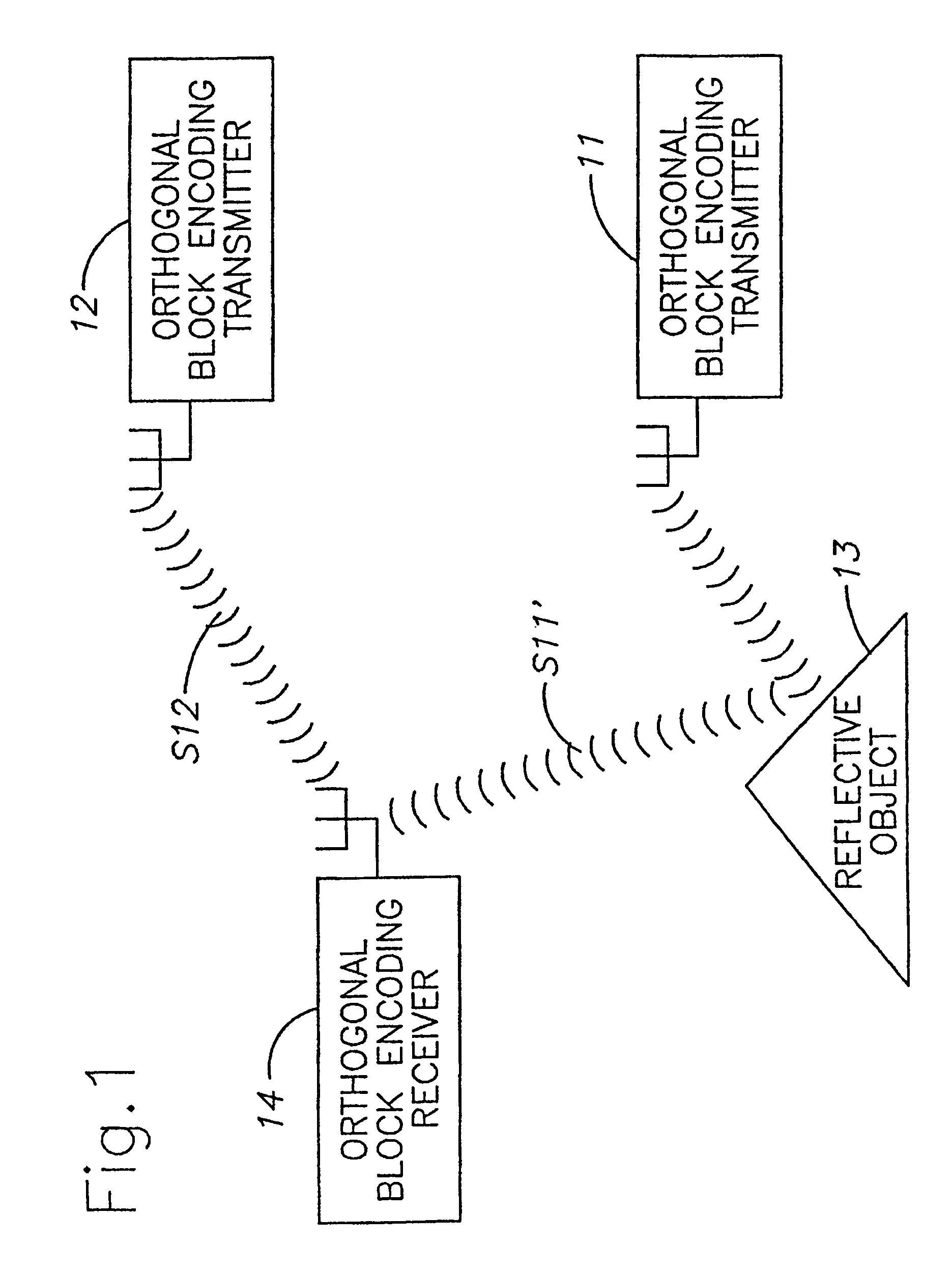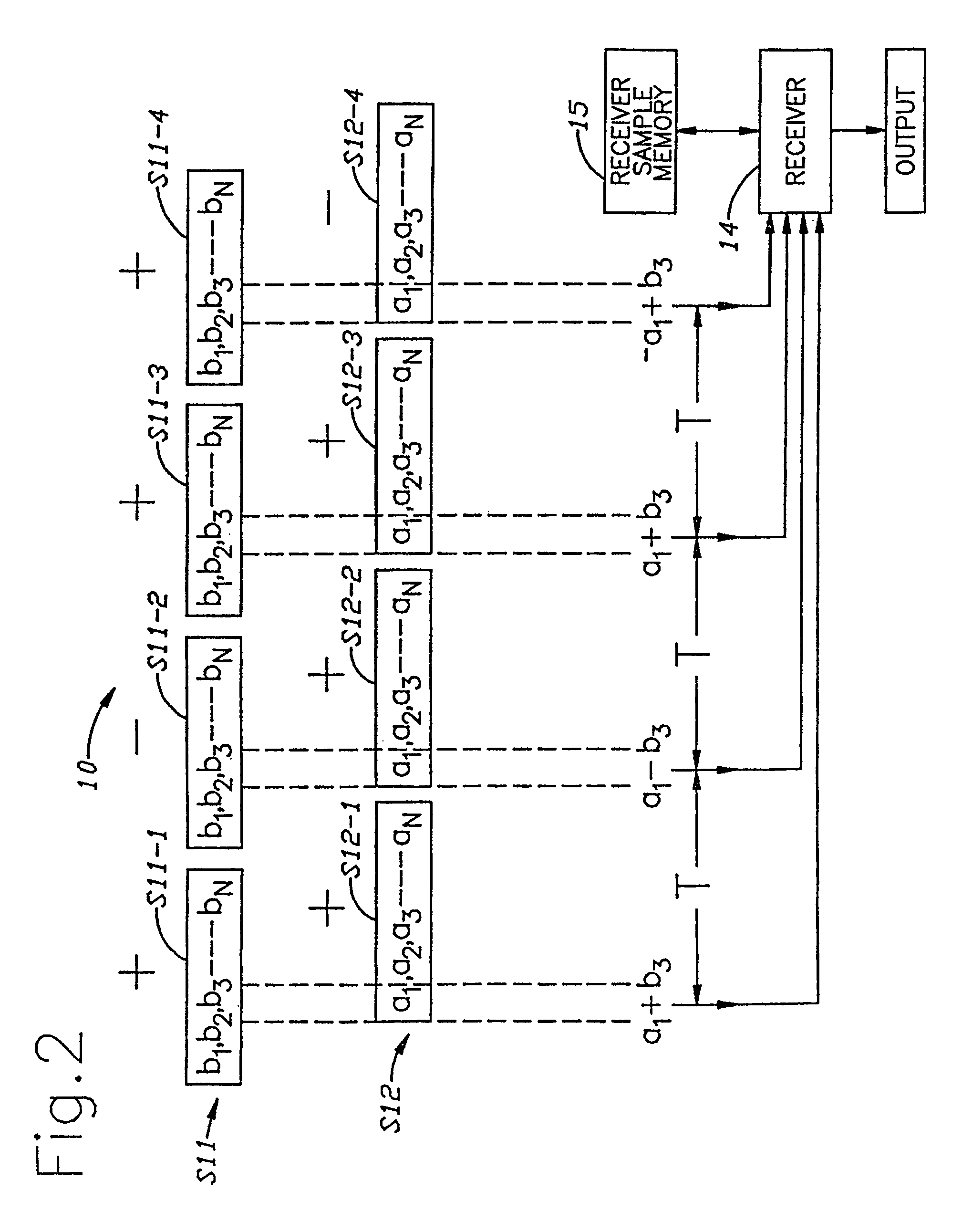Communication system and method with orthogonal block encoding
a communication system and block technology, applied in the field of orthogonal block encoding of communication systems and methods, can solve the problems of severe compromising orthogonality, interference of signals, loss of advantages,
- Summary
- Abstract
- Description
- Claims
- Application Information
AI Technical Summary
Benefits of technology
Problems solved by technology
Method used
Image
Examples
first embodiment
[0053]The access code generator 40 can operate in a number of different embodiments. In a first embodiment, the use of the access code generator 40 is optional, and may be omitted in some systems. Signals which are orthogonal to each other are then generally transmitted in the same cell. If spare orthogonal codes not already allocated in a cell are available, they can advantageously by employed in neighboring cells such that a proportion of the neighboring cell interference is eliminated. CDMA systems of the prior art are not able to employ such orthogonality between cells as the transmissions of one cell cannot be synchronized with the transmissions of neighboring cells. However, when practicing this invention, lack of precise synchronization is not an impediment to orthogonality between cells. If, however, the entire set of mutually orthogonal codes is used in a first cell, then a neighboring cell uses a second set of codes, orthogonal to each other but non-orthogonal to the first...
second embodiment
[0054]In a second embodiment, the access code generator generates a chip-rate code of length equal to the block length and repeats it for the repeated blocks. The code is then changed for the next set of repeated blocks, and so-on. The property afforded by this second technique is that multipath signals delayed by a few chips are despread by the same sign pattern produced jointly by access code generator 52 and block sign generator 54 in the receiver of FIG. 7. Thus multipath propagation causes additive intersymbol interference between the despread symbols output by averager 58, which may be resolved by the exemplary maximum likelihood equalizer 60. The access code is preferably the same for all signals in the same cell while a different access code is employed for signals in different cells. The access code is preferably chosen according to the technique disclosed in U.S. Pat. No. 5,353,352 to achieve controlled non-orthogonality between cells.
third embodiment
[0055]In a third embodiment, the access code generator 40 is chosen to render multipath delayed signals orthogonal to non-delayed signals. This is achieved by applying like sign changes to any pair of adjacent chips in half of the block-repeats and unlike sign changes in the other half of the block-repeats. This has the effect that delays of + / −one chip relative to a nominal propagation delay result in multipath signals which are orthogonal to the nominal propagation path. The multipath signals are then not orthogonal but rather identically coded to another signal's code. This option is thus preferably used when only half the available codes are employed for discriminating between signals in the cell and the other half of the orthogonal codes are those which appear on + / −one chip-delayed multipath and thereby discriminate the multipath.
[0056]In a fourth embodiment, the access code generator 40 is a random code generator or none of the above. Then multipath signals are neither orthog...
PUM
 Login to View More
Login to View More Abstract
Description
Claims
Application Information
 Login to View More
Login to View More - R&D
- Intellectual Property
- Life Sciences
- Materials
- Tech Scout
- Unparalleled Data Quality
- Higher Quality Content
- 60% Fewer Hallucinations
Browse by: Latest US Patents, China's latest patents, Technical Efficacy Thesaurus, Application Domain, Technology Topic, Popular Technical Reports.
© 2025 PatSnap. All rights reserved.Legal|Privacy policy|Modern Slavery Act Transparency Statement|Sitemap|About US| Contact US: help@patsnap.com



